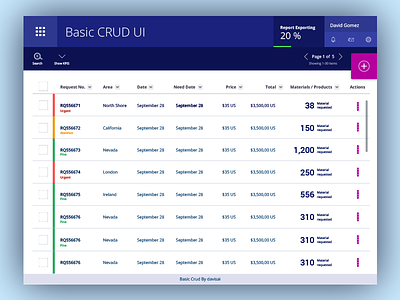BREAD, UI Exploration
BREAD
more here:
https://www.behance.net/gallery/57637139/BREAD-UI-Patterns-Exploration
In terms of databases, there is a set of basic actions that allow users to interact with information. These actions function as an analogy for the maintenance of information schemes, and are known as BREAD. This acronym stands for Navigation, Reading, Editing, Addition and Deletion of data.
In terms of user interface, the application should be able to make these actions invisble to the end user, and make use of different interactions to allow the user to maintain data.
This paradigm leads to data-based solutions (usually business solutions) and based all interactions on a single form, tables and reports.
So let's explore a little more about these types of solutions and it's more common design patterns.
Browse
Integrate a search control and filtering options for large amount of data. Remember that these solutions work well with large and complex data.
Read
Also related to search and retrieve data. Remember to provide the user with the tools to filter out large amounts of content. You should Empower the user to go from low to a more detailed level of information.
Edit
The solution should allow the user to edit and change data. We can achieve this using different behaviuors, inline-edition (Comfortable for users who want a very quick way to edit data), modals or new pages.
Add
The addition of new information is the key function to maintain the system. A common pattern is to place the main action in a relevant position and higlligth the interaction. Place the user out of context (in a modal or new page) letting the user focus in this subtask with out distractions.
Delete
Delete or deactivate existing entries. This command will delete one or more records from the data source. Normally the deletion is a critic action, so remember to give the user the proper feedback.
Without these basic operations, an application can not be considered as terminated. The fundamental nature of these actions allows designers to group this in the management or maintenance of catalogs.









